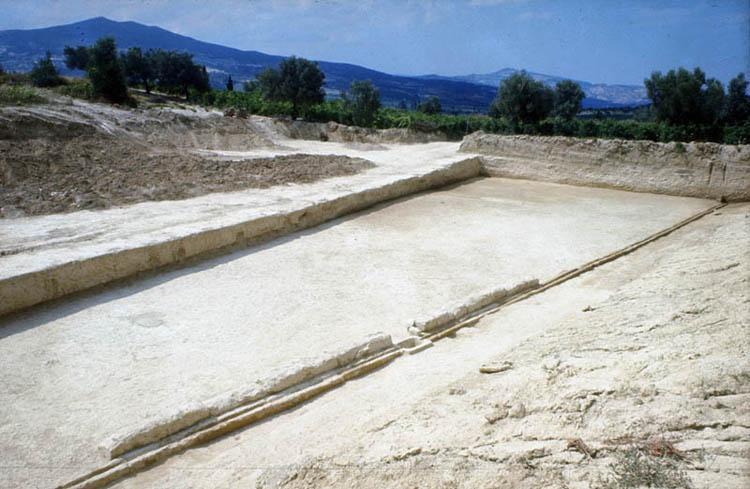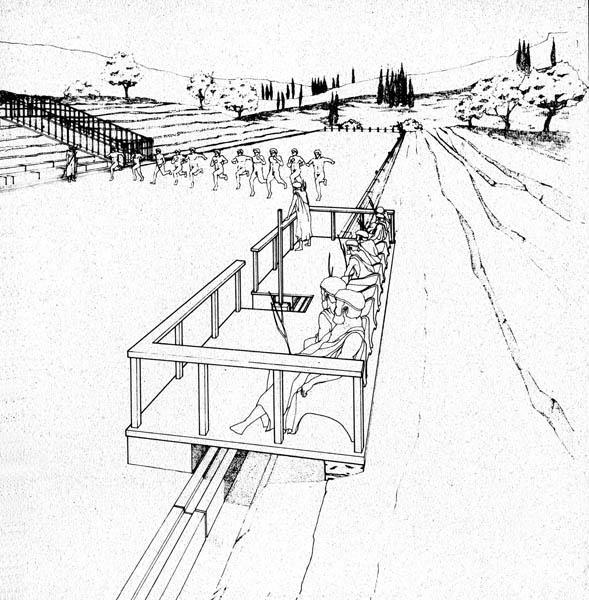There are very few permanent stone seats, and all are in two or three rows along the west side. They probably should be understood as the seats for competitors and their trainers, and/or distinguished guests at the games. Otherwise, the simple slopes must have provided the viewing stands (theatron) for spectators. Nemea thus stands chronologically in the evolution of the ancient stadium between Olympia where there are no seats, and Epidauros where there are extensive seats in one end of the stadium. Ultimately, the whole stadium will be provided with permanent seats as at Delphi.

The water channel along the east side of the track with a basin next to a cutting for the 100-foot marker and with large stone blocks for the support of a wooden platform for the judges.
There is one other seating area at Nemea. This is represented by a row of stone blocks inside the water channel on the east side of the track at the 100-foot point from the balbis. Bronze and iron nails found behind the blocks show that there was a wooden platform on top of the blocks that must have served as the headquarters for the judges. The hellanodikaion (judges’ stand) at Olympia is in an analogous position.

Drawing of a reconstruction of the judges’ stand (Hellanodikaion).
It is not coincidental that coins discovered in the excavation of the stadium are clustered by city-state, and that those of Argos were concentrated behind the judges’ stand. The Argive judges thus had the support of the “home crowd.” On the other side of the track, opposite the Argives, was a cluster of coins from Corinth, and Sikyonian coins were next to them further away from the balbis. Next to the Argives were the coins of Kleonai, neighbors and political allies.